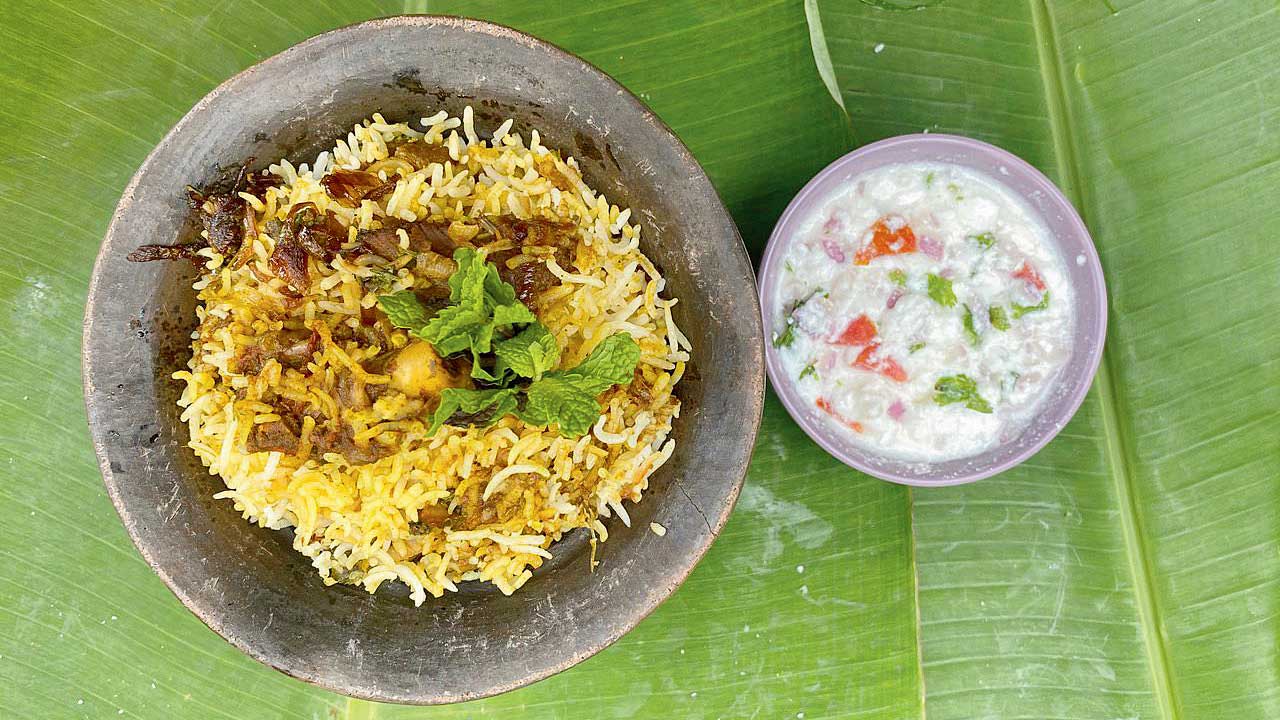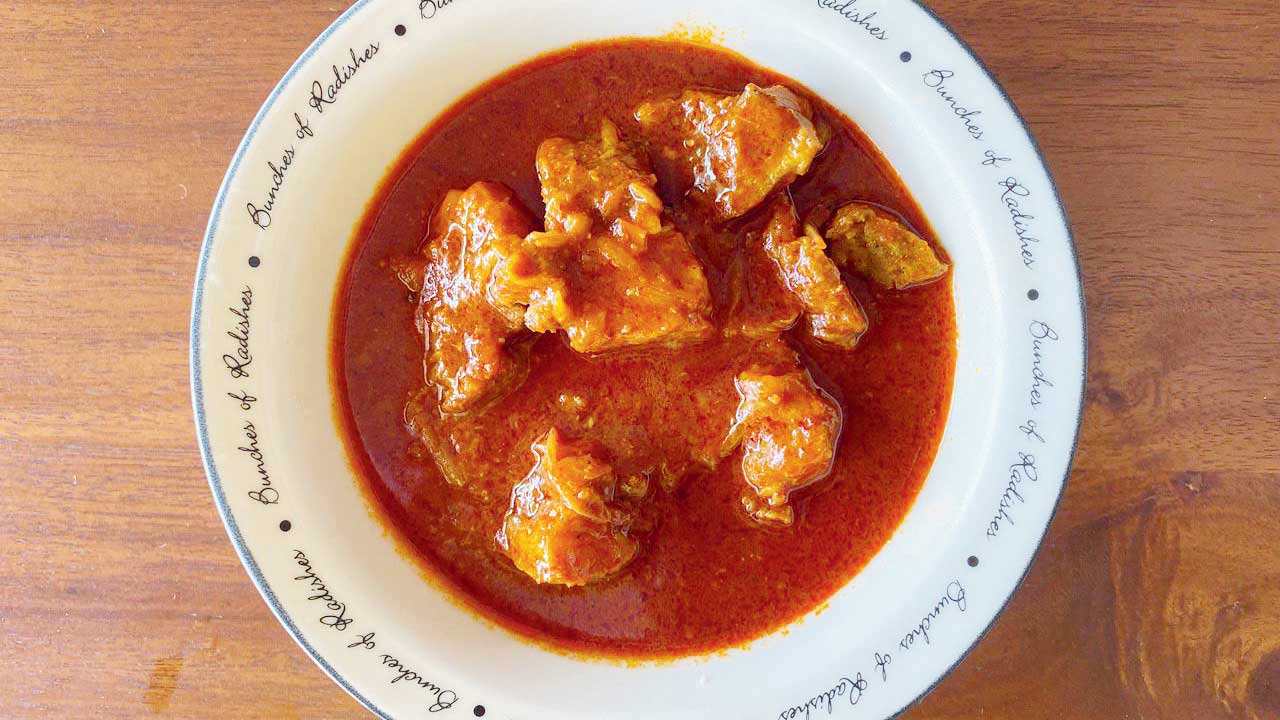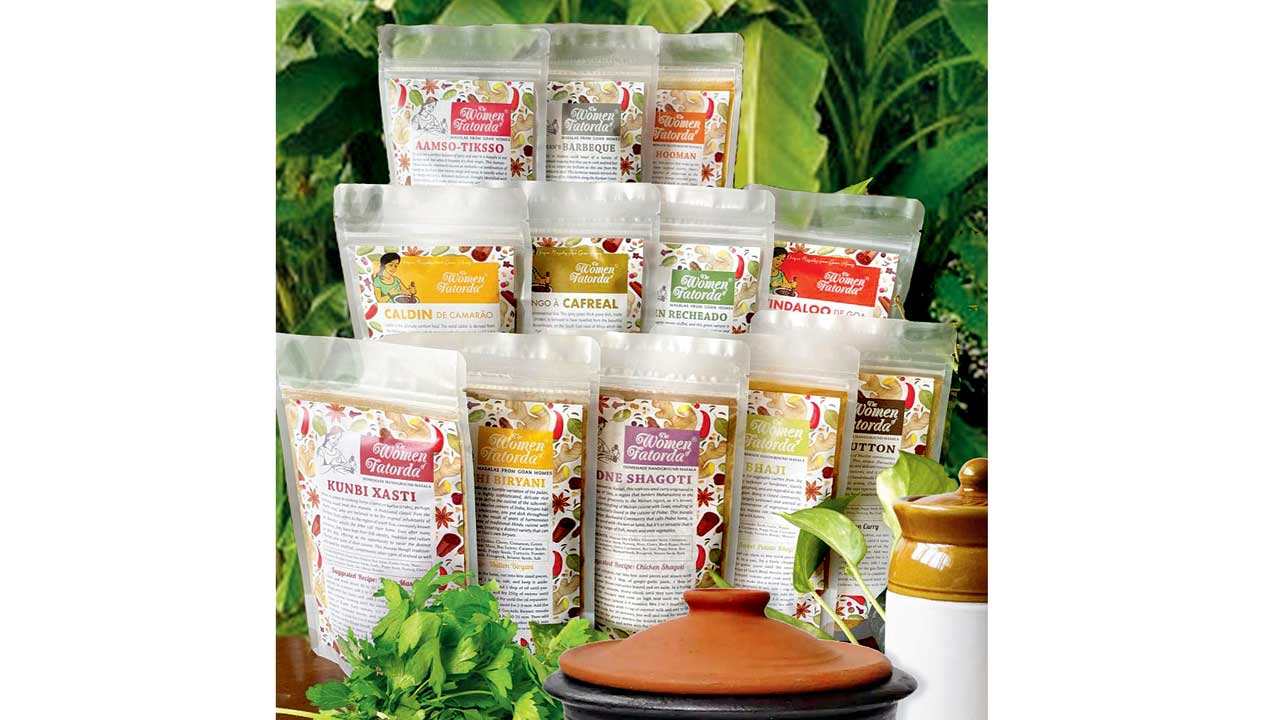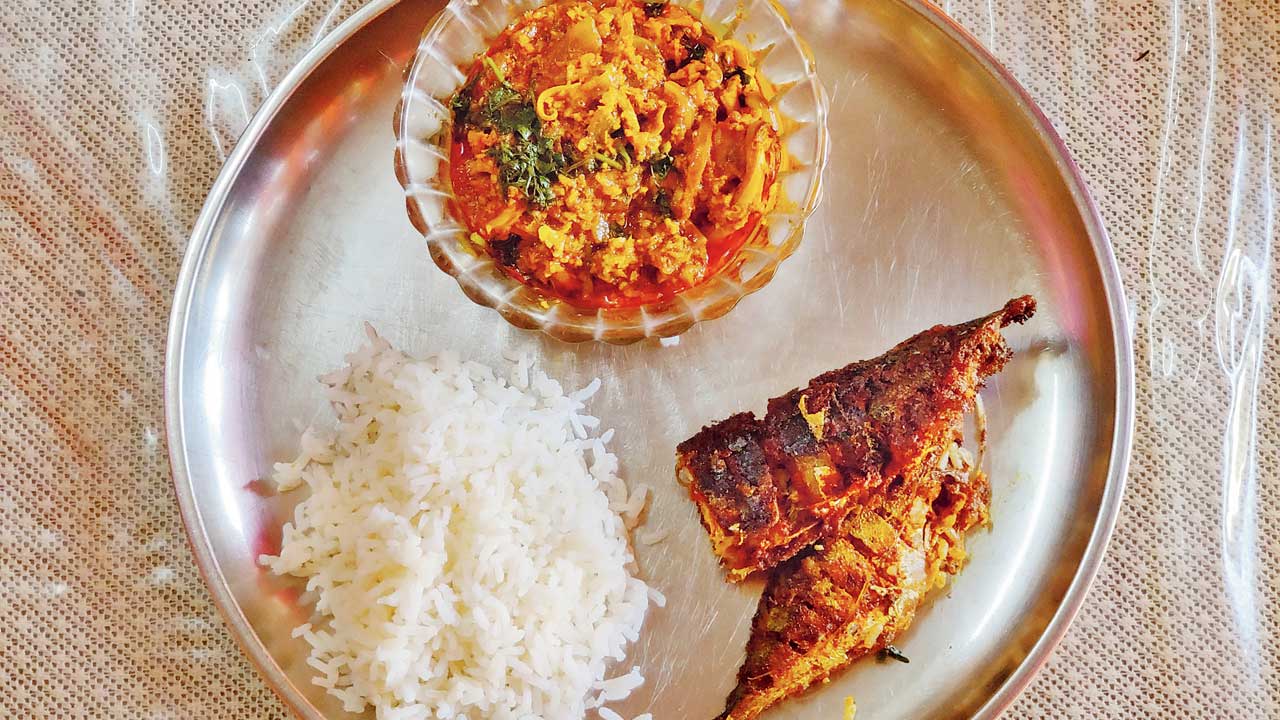A former adman has roped in women of a Madgaon suburb for a new spice blends venture that makes Goan cuisine seem effortless

Tisryo masala
The making of mutton biryani in this writer’s home, at least, is the most elaborate affair. Right from marinating the meat to sautéing the onions with whole spices, chillies, and ginger-garlic paste, to cooking the basmati rice—everything requires technique, skill and time. But watching a less intimidating Instagram video involving the preparation of the Goemchi dum biryani by Bibi Sugra Khan from the Konkani Muslim community of Chandrawado in Fatorda, South Goa, makes it seem rather, effortless. In the video, Bibi Sugra is seen slathering the meat in curd and a rich spice mix, before cooking it in a pressure cooker; this is followed by layering the mix with rice and garnishing it with fried onions. “The ingredients for the masala come from my own backyard, and the recipe has been handed down to me from my grandmother,” she shares. Bibi Sugra is one of the many faces behind a new curated masala blends brand called The Women of Fatorda, run by former adman and Mumbaikar, Shankar Nair.
ADVERTISEMENT

Goemchi dum biryani
Nair first came in touch with these women through friend and social activist Usha Sardesai, whose husband Vijai Sardesai is MLA of Fatorda, and former deputy CM of Goa. “She has been running a self-help initiative for women, where they make a lot of things including candles and soaps, selling them at affordable prices. What caught my attention were the home-made masalas these women made. They were simply delicious,” recalls Nair, who recently moved to Goa. “Since I am a foodie, this resonated with me. I particularly enjoy clams and prawns, so doing something with masalas from Goa was right up my alley. Someone asked me why not start a handmade soaps business, but I can’t eat soap, or I would have,” jokes Nair.
It took Nair a couple of years to bring the plan to fruition, he says. The company was registered in 2018, but work only began a year later, after securing an FSSAI licence. Nair, who formely ran a brand consultancy firm in Mumbai, says he was able to infuse his expertise into building the venture in Goa. While The Women of Fatorda was officially launched in 2019, it took a beating in the pandemic. He has only just begun to revive the company, even if slowly, he says.

Pork vindaloo
Fatorda, about 30 km from the Goan capital city of Panjim, is a suburb in the Salcete region of Madgaon. “It is home to many indigenous tribal communities, including the Kunbis, who are said to be among the earliest settlers of the region, and the Gavlis, [who were traditionally herdsmen] and eat only vegetarian,” says Nair. For the brand, he and his team hand-picked masalas which best represented the diverse communities of the region. The company directly buys from the women, who make it exclusively for them. At present, 12 masala blends are available and Nair insists that they are all vegetarian and don’t use preservatives. The packaging mentions a six-month shelf life.
There is the Portuguese and Africa-inspired Frango a Cafreal made with green coriander, fennel seeds, ginger, garlic and whole spices. The masala is used to make a spicy green thick chicken gravy dish—the cafreal is believed to have travelled from Mozambique, on the South East coast of Africa which like Goa, was a Portuguese colony for around 500 years. Another interesting blend Aamso tiksso traces its roots to the Goan Hindu community. The spicy and tangy masala, locally known as the ambotik, is used to prepare fish, prawn or calamari curries. A masala we were unfamiliar with is Gavli bhaji attributed to the pastoral Gavli tribe, whose cuisine, Nair says, was largely unknown and untried at one time, since theirs was a close-knit community. This can be used to prepare an array of vegetarian specialties.

The 12 masalas available in the range
Other options include Kunbi xasti, a masala prepared by the Kunbi tribe to make tisryo (clams) and kurlya (crabs); Green recheado used in fish stuffing or as a seafood marinade; and Pedne shagoti, a masala that traces its origins to the Pedne taluka of Goa. Nair’s personal favourite is the Fisherman’s barbecue, which is made with basic ingredients like Goan green chillies, ginger, garlic, lime, white vinegar and salt. “This masala mirrors the simple lives of the fisherfolk along the Konkan Coast,” says Nair, adding, “Just like language is a carrier of culture, so is cuisine. It gives us insights into the community and their traditions. The ingredients they used were minimal. They couldn’t afford anything elaborate.”

Shankar Nair
Nair’s vision for the brand is to move beyond Fartorda to include masalas from other communities of Goa. “For instance, there are a lot of Mangalorean Christians in Goa, and their food also informs Goan cuisine.” He is, however, particular about not selling the products on retail stores. “It might seem like a self-imposed restriction, but currently I am focusing on building the brand, rather than selling it. I don’t want the sales to pull my cart. What I want to do is to empower these women, and eventually make them equal stakeholders in the business. They are after all, the heroes of the brand.”
MID-DAY’S TASTE TEST
For those with little knowledge about Goan cuisine, The Women of Fatorda website is a neat primer on the explosion of flavours you could expect if you were to buy from the store. With every masala on their menu comes a detailed backstory about its origin, ingredients and a suggested recipe, which is simple to make. We picked up the Aamso tiksso, Goan recheado, Vindaloo de Goa and Gavli bhaji (all cost around Rs 150 each). Some of them are wet masalas, while others come as dry powders in sealed packets. The masalas were delivered within four days of placing the order.

Mussels prepared by this writer with Aamso tiksso, served with rice and bangda fry
The ambotik curry is a staple in most Catholic households from Goa and Mangalore, including this writer’s. Traditionally, it’s made with shark (mori), but you can use any fish like rohu or catla. Interestingly, the day we were attempting this dish, the fish market had none of the above. On the suggestion of my mother, we used the masala to prepare green-shelled mussels, which are juicy as well as fleshy. It seemed like an interesting choice, but my mother’s call to use fresh grated coconut in this dish—aamso tiksso gravies are always made sans coconut—meant that this could go either way. We marinated the half-shelled mussels with turmeric and salt. We followed some parts of the suggested recipe on the blog—sauteing onions in a kadhai and adding three tablespoons of the wet masala. But since we like our gravies to be spicy, we added an extra tablespoon of red chilli powder, followed by the mussels and grated coconut. Much to our surprise, this unusual combination, turned out to be an absolute treat—sweet, spicy and tangy in parts, and very flavourful. We had it with bangda fry, and rice. A hearty Sunday meal. And even though the Goans might not approve of ambotik and coconut, we definitely do.
With the recheado, a masala made with fresh Goan chillies, whole spices and white vinegar, we once again broke away from the norm. The recheado generally comes as a red or green masala, and is used as a stuffing to make bangda fry, or as a marinade for fried fish. We used it in a bombil (Bombay duck) curry, and the experiment was somewhat of a success.
This came close to the Konkani-style bombil green curry that we make at home. What we think works for these masalas is that their preparation is not set in stone. If you enjoy experimentation, love your fish and have some basic knowledge of Goan cuisine, anything you try with these will lead you to Goa.
Women of Fatorda didn’t know we were buying. Mid-day reviews anonymously and pays for food and drinks
To buy: https://www.womenoffatorda.in/
 Subscribe today by clicking the link and stay updated with the latest news!" Click here!
Subscribe today by clicking the link and stay updated with the latest news!" Click here!







